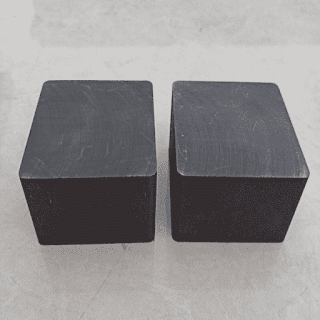Comparison of anode paste and electrode paste
Anode paste is the predecessor of preparing anodes in electrolyzers in aluminum plants. In the 40 years before 1995, the anode paste was once the largest product in China's aluminum carbon products. After 2000, this product will gradually be replaced by anode carbon blocks. It is the product with the largest output among carbon products. The anode paste is a carbon paste made of petroleum coke and pitch coke as aggregates and coal tar pitch as a binder. It is used as anode material for continuous self-baking aluminum electrolytic cell. Because of its high content of binder (more than 24%), it is paste-like before the upper part of the electrolytic cell is sintered, so it is called anode paste. The prepared anode is not only capable of good electrical conductivity, but also resistant to high temperature and corrosion, and at the same time the price is low. The resistivity of the preliminary anode is 50-70 μΩ.m, plus the lead and contact resistance, during normal aluminum electrolys...

